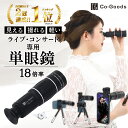小学校の社会見学だったかな、科学館のプラネタリウムで、宇宙はこうして誕生したんだよって説明を受けた記憶がある。たぶん、big bangの爆発を見たんだと思う。
数年前、プラネタリウムに行く機会があり、あの子供の頃の感動を期待してしまったが、夏の星空とか、この地方で見える星とか、現実的過ぎて、寝落ちしてしまった。
とてつもない時間をかけて、つくられた地球を粗末にしてはいけないよね。
2022/7/19 level 9
NASA Reveals First Images from James Webb Telescope
ジェームスウェブ宇宙望遠鏡で撮影した初画像
NASA has revealed the first images from its $10 billion James Webb Space Telescope, offering the deepest look of the cosmos ever captured /and the farthest humanity has ever seen in both time and distance.
NASAは公表したー百億ドルのジェームスウェブ宇宙望遠鏡から送られた初めての画像を。
今までに捉えたことがない、最も深い宇宙の奥を捉えた画像を提供した。それは、今までにない時間と距離を越え、人類から最も離れた場所の画像だ。
Part of the image is light from not too long after the Big Bang, which was 13.8 billion years ago.
その映像の部分の輝きは、138億年前にビッグバン(宇宙の初期に起こった大爆発で現在の膨張した宇宙に至ったという説)が起った時からそれ程遠くはない。
"What we saw today is the early universe," Harvard astronomer Dimitar Sasselov said after the reveal.
”今見ている画像は、宇宙の誕生した初期だ”とハーバード大学の天文学者は述べた。

Using the infrared ˌɪnfrəˈred light spectrum, Webb can see through cosmic dust and detect faraway light from the corners of the universe, scientists said.
赤外線を使って、宇宙の塵を通り超して見ることができる、遥か彼方の宇宙の隅々で輝く光が観測できると科学者は言った。
While NASA didn't provide any estimate as to-について how far back the first images looked, outside scientists think somewhere in the image is a galaxy older than humanity has ever seen, probably back to 500 million or 600 million years after the Big Bang.
NASAはその初めての画像が、推定何億光年前かは明らかにしなかった。
NASAで働いていないある科学者は、その画像は人類が見たことがある画像より古い銀河系で、多分ビッグバンから数億年後のものと考える。
Webb, the world's biggest and most powerful space telescope, was launched in December 2021 from French Guiana in South America, reaching its lookout point 1.6 million kilometers from Earth in January 2022.
世界最大かつ最強の宇宙望遠鏡は2021年12月、南アメリカのフランス領ギアナから打ち上げられ、2022年1月に観測ポイントに到着したー地球から160万km離れている。
Scientists then had to align-閉じられていたものを開く/əlάɪnthe mirrors, get the infrared detectors cold enough to operate and calibrate-測定する the science instruments, all of which are protected by a huge sunshade that keeps the telescope cool.
科学者たちは鏡を広げるためには、赤外線探知機を使い、科学計器を測定し、操縦きるよう温度まで冷やす。望遠鏡は冷やし続けるために巨大なシェードで守られている。
The plan is to use the telescope to look back so far that scientists will get a glimpse of the early days of the universe about 13.7 billion years ago and zoom in on closer cosmic objects, even our own solar system, with sharper focus.
この計画は、この望遠鏡を使い遠って過去を見ることで、科学者たちは、宇宙が誕生したころの初期、137億前の宇宙の初期の一瞬を見るだろう。
そして拡大して、さらに天体にあるものや、私たちの銀河系さえもしっかり見ることができる。
Webb is considered the successor to the Hubble Space Telescope, which has looked as far back as 13.4 billion years.
ウェブ宇宙望遠鏡は、134億年前まで観測できるハッブル宇宙望遠鏡の後任となる。
At 6.4 meters, Webb's mirror is the biggest and most sensitive ever sent into space. It's comprised of 18 segments, one of which was hit by a micrometeoroid-微量流星物体 in May 2022.
6.4mの巨大で鋭敏で高感度のウェブ宇宙望遠鏡の鏡が宇宙に送られた。18のパーツで構成していて、そのひとつに流星から生まれた塵が衝突した。
Four previous micrometeoroid strikes to the mirror were smaller. Despite the impacts, NASA said the telescope has continued to exceed mission requirements with little data loss.
以前に鏡の部分にぶつかった4個の細かい流星物体はもっと小さかった。衝撃はあったが、データロスがあっただけで、任務を続けた。
記事引用:
